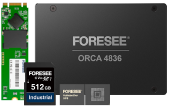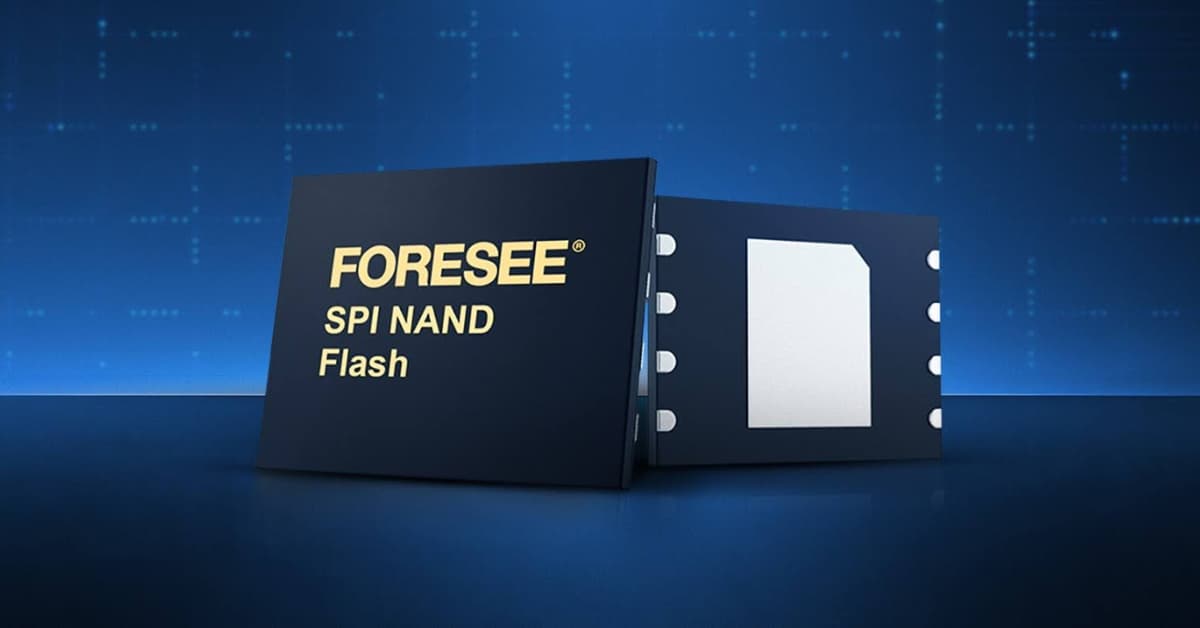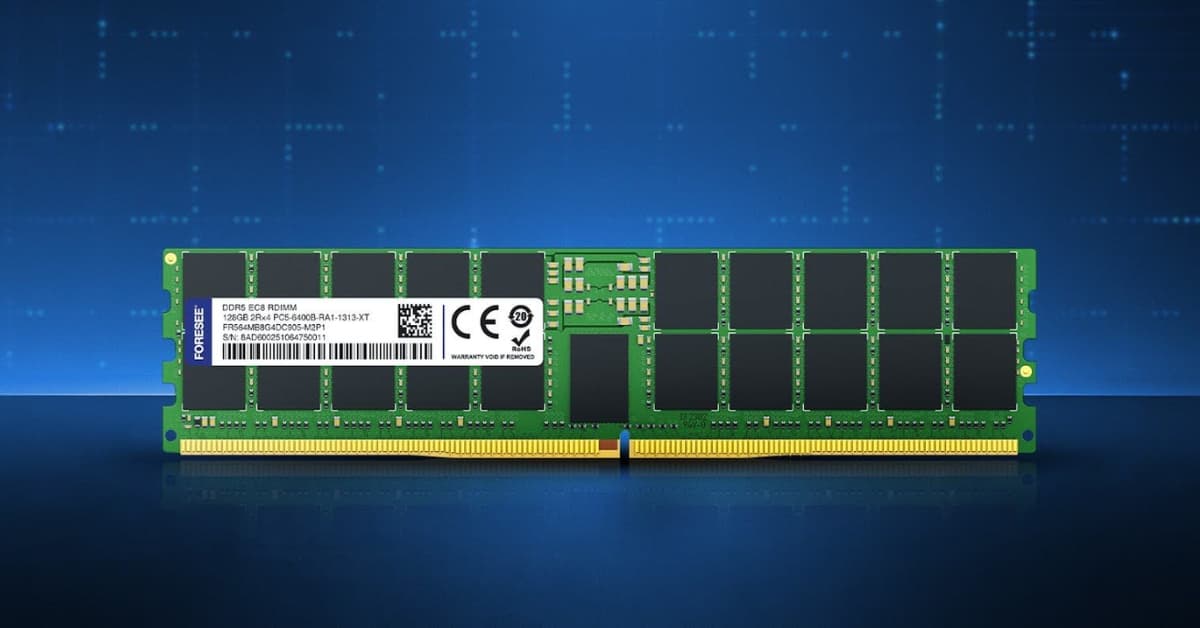Connected vehicles process 25GB of data per hour through cameras, radar, and sensor networks that never sleep. Yet most embedded memory solutions crumble under automotive conditions: Temperature swings destroy data integrity, vibration causes read errors, and standard eMMC components wear out within months of deployment.
We’ve tested memory modules across automotive OEM programs and discovered a critical gap between what engineers specify and what actually survives in vehicles.
The difference isn’t just about choosing between UFS and eMMC — it’s about understanding how automotive-grade embedded memory solutions handle the relentless data demands of modern connected vehicles while maintaining absolute reliability across decade-long operational lifecycles.
Connected Vehicle Storage Demands Are Exploding
Modern connected vehicles function as mobile data centers, processing sensor information, storing multimedia content, and maintaining communication with cloud services simultaneously. These vehicles generate data volumes that dwarf traditional automotive storage requirements by orders of magnitude.
Advanced Driver-Assistance Systems (ADAS) and Autonomous Driving: Camera systems capture 4K video streams at 60fps, requiring 1.5GB per minute of storage during active recording. LiDAR sensors generate point cloud data exceeding 10MB per second during operation. Radar calibration data, sensor fusion parameters, and machine learning models require additional gigabytes of accessible storage.
Infotainment and Connectivity: Navigation systems store detailed map databases exceeding 64GB for global coverage. Over-the-air update packages range from 2GB to 8GB per update cycle. User content, streaming cache, and application data continuously consume additional storage capacity.
Vehicle Diagnostics and Telematics: Continuous logging of engine parameters, transmission data, battery management information, and safety system status generates 100MB to 1GB daily, depending on vehicle complexity and usage patterns.
Storage utilization patterns from major automotive OEMs show that connected vehicle storage requirements increase up to 400 percent annually as manufacturers add new features and enhance existing capabilities. Standard embedded memory solutions cannot scale to meet these exponentially growing demands while maintaining the reliability automotive applications require.
UFS vs eMMC: Choosing the Right Embedded Memory Technology
Automotive applications require embedded memory technologies that balance performance, capacity, and reliability within the constraints of vehicle electrical systems. Universal Flash Storage (UFS) and embedded multi-media cards (eMMC) represent the two dominant embedded memory technologies offering distinct advantages for specific automotive applications.
UFS Performance Advantages
- Sequential read speeds: Up to 2100MB/s, enabling real-time ADAS data processing
- Random read/write performance: 80,000+ IOPS supporting simultaneous multi-application access
- Command queuing: Multiple concurrent operations reduce system latency
- Power efficiency: Lower power consumption per operation, extending vehicle battery life
eMMC Reliability Benefits
- Proven automotive track record with extensive qualification history
- Lower implementation complexity reduces integration risks
- Cost-effective scaling for high-volume automotive production
- Mature ecosystem with broad supplier availability
The selection between UFS and eMMC depends on specific application requirements. ADAS systems processing real-time sensor data benefit from UFS performance capabilities, while infotainment systems focused on cost optimization often utilize eMMC solutions. Many modern vehicles implement both technologies strategically across different electronic control units.
AEC-Q100 Qualification: The Automotive Memory Standard
AEC-Q100 qualification represents the automotive industry’s fundamental reliability standard for semiconductor components used in vehicle applications. This qualification framework validates component performance through comprehensive testing that simulates decades of automotive operation under extreme conditions.
For embedded memory solutions, AEC-Q100 compliance encompasses:
- Temperature Grade Classification: Grade 1 (-40°C to +125°C) for engine bay applications, Grade 2 (-40°C to +105°C) for passenger compartment systems
- Package Qualification: Wire bond integrity, die attach reliability, and package moisture resistance testing
- Reliability Qualification: High temperature operating life (HTOL), temperature cycling, and humidity testing protocols
- Characterization Testing: Electrical parameter validation across temperature, voltage, and frequency ranges
- Defect Screening: Manufacturing quality procedures ensuring zero-defect delivery to automotive customers
AEC-Q100 qualification isn’t simply extended consumer testing — it represents fundamental design approaches prioritizing long-term reliability over short-term cost optimization. Automotive-grade embedded memory incorporates enhanced error correction, improved thermal management, and robust power supply filtering that consumer components lack.
Automotive Temperature Ratings and Environmental Requirements
Automotive embedded memory operates in temperature environments that exceed the limits of consumer electronics by significant margins. Vehicle installation locations subject memory components to temperature extremes, thermal cycling, and prolonged exposure to elevated temperatures that quickly degrade standard components.
Critical Temperature Considerations
Engine Bay Applications: Telematics control unit (TCU) and engine control unit (ECU) installations experience temperatures ranging from -40°C during cold starts to +125°C near exhaust systems. Memory components must maintain data integrity and operational performance across this range without degradation.
Dashboard Integration: Infotainment systems and instrument clusters face direct solar heating that can elevate component temperatures to +85°C even in temperate climates. Memory components require a thermal design that maintains consistent performance during sustained high-temperature operation.
Underhood Electronics: ADAS control modules and safety systems often mount near heat-generating components where ambient temperatures regularly exceed +100°C. Memory solutions must incorporate thermal protection to prevent data loss during extreme temperature exposure.
We’ve documented temperature-related failures in automotive prototypes using consumer-grade embedded memory, where components experienced data corruption within 500 hours of testing at automotive temperature specifications.
These failures occurred well below the temperature limits claimed by component manufacturers, highlighting the difference between laboratory specifications and real-world automotive reliability.
ADAS Memory Requirements and Performance Specifications
Advanced driver-assistance systems impose the most demanding performance requirements on automotive embedded memory. ADAS applications require ultra-low latency access to sensor calibration data, real-time camera and radar information processing, and immediate storage of safety-critical system logs.
Real-Time Processing Demands
ADAS systems simultaneously process multiple high-resolution camera streams while maintaining response times under 10 milliseconds for collision avoidance algorithms. Memory subsystems must provide consistent access latency without variability that could delay safety-critical operations.
Forward collision warning systems require immediate access to vehicle speed data, brake system status, and radar target information. Memory components with command queuing capabilities enable simultaneous data access without blocking operations that could compromise system response times.
Data Integrity Requirements
ADAS applications cannot tolerate data corruption that might affect sensor calibration accuracy or algorithm reliability. Embedded memory solutions require advanced ECC that detects and corrects multi-bit errors in real time without impacting system performance.
Lane-keeping assistance systems depend on precise camera calibration parameters that must remain accurate throughout the vehicle’s operational life. Memory components require data retention specifications exceeding 10 years at maximum operating temperature to ensure calibration integrity.
Write Endurance Considerations:
ADAS systems continuously log sensor data, update algorithm parameters, and store diagnostic information throughout vehicle operation. Standard embedded memory offers 3000-10,000 program/erase cycles, while automotive ADAS applications require 100,000+ cycles to support decade-long operational requirements.
Critical Automotive Applications for Embedded Memory
Infotainment and Navigation Systems
Modern infotainment platforms integrate navigation, entertainment, connectivity, and vehicle control functions that require high-capacity embedded memory with consistent performance characteristics. These systems must boot quickly, access large databases efficiently, and support over-the-air updates without interrupting vehicle operation.
Navigation applications require embedded memory to store detailed map databases while supporting real-time updates and route calculations. Map data structures demand random access patterns that benefit significantly from UFS performance capabilities, particularly in urban environments with complex routing requirements.
Lexar Enterprise automotive embedded memory solutions provide the storage capacity and access performance needed for next-generation infotainment reliability. Our UFS and eMMC modules support high-definition content streaming while maintaining the temperature stability and endurance required for automotive integration.
ADAS and Safety System Integration
ADAS applications represent the most performance-demanding embedded memory use case in automotive systems. These applications require ultra-low latency storage access, high write endurance, and absolute data integrity throughout extended automotive operational lifecycles.
Camera-based ADAS systems particularly benefit from UFS embedded memory solutions that provide the performance needed for real-time image processing while supporting safety applications’ continuous data logging requirements.
Sensor fusion algorithms depend on embedded memory systems that can simultaneously access calibration data from multiple sensors while storing processed results for system learning and adaptation. These applications require memory architectures that support numerous concurrent operations without introducing latency variations.
Telematics and Vehicle Connectivity
Connected vehicle systems require embedded memory solutions that support continuous data logging, cellular communication buffering, and over-the-air update staging. These applications demand reliable operation during power fluctuations and environmental stress conditions common in automotive installations.
Vehicle diagnostic systems generate continuous data streams that require immediate storage with zero tolerance for data loss. Embedded memory solutions must incorporate power loss protection features that complete pending write operations during unexpected power interruptions.
Over-the-air update systems require embedded memory with sufficient capacity to stage large software packages while maintaining normal vehicle operation. Update processes must complete reliably even during temperature extremes or power supply variations encountered in automotive environments.
Lexar Enterprise Automotive Embedded Memory Solutions
Lexar Enterprise delivers AEC-Q100-qualified embedded memory solutions specifically engineered for automotive applications. The Lexar Enterprise automotive embedded memory portfolio also addresses the unique challenges of connected vehicle environments while providing the performance and reliability that modern automotive systems demand.
UFS Automotive Solutions
- Capacity range: 32GB to 512GB, supporting next-generation vehicle applications
- Performance: Up to 2100MB/s sequential read, 80,000+ IOPS random performance
- Temperature range: -40°C to +105°C operation with extended storage ratings
- AEC-Q100 Grade 2 qualification with automotive-grade reliability
- Advanced ECC with real-time error correction capabilities
eMMC Automotive Solutions
- Capacity range: 8GB to 256GB, optimized for cost-sensitive applications
- Proven reliability: Extensive automotive track record with major OEM deployments
- Temperature range: -40°C to +85°C with automotive qualification testing
- Enhanced endurance: 100,000+ program/erase cycles with wear leveling
- Power loss protection: Integrated backup systems prevent data corruption
Our engineering team collaborates directly with automotive OEMs and Tier 1 suppliers to optimize embedded memory configurations for specific vehicle platforms, ensuring integration success and long-term operational reliability across diverse automotive applications.
Integration Design Considerations for Automotive Embedded Memory
Successful automotive embedded memory integration requires a comprehensive understanding of vehicle electrical systems, thermal management requirements, and electromagnetic compatibility considerations. Engineers must evaluate not only storage performance but also power consumption, thermal dissipation, and electromagnetic immunity within vehicle architectures.
Power Management Design: Automotive electrical systems experience significant voltage variations, load dump events, and power interruptions that can corrupt embedded memory data. Implement appropriate power supply filtering, transient protection, and backup power systems that maintain memory component integrity during electrical disturbances.
Thermal Design Optimization: Embedded memory components generate heat during high-performance operations, and this thermal energy must be managed effectively within vehicle thermal constraints. Heat sink design, thermal interface materials, and airflow patterns during PCB layout all contribute to consistent performance across automotive temperature ranges.
EMC Compliance Strategies: Vehicle electromagnetic environments include ignition systems, motor drives, cellular radios, and switching power supplies that generate significant electromagnetic interference. Select embedded memory components with proven EMC performance and implement PCB designs that minimize electromagnetic susceptibility.
Testing and Validation for Automotive Embedded Memory
Automotive embedded memory requires extensive validation testing that simulates vehicle operational conditions and validates long-term reliability under automotive stress scenarios. Comprehensive testing protocols ensure memory components meet automotive quality standards throughout extended service intervals.
Environmental Stress Testing: Subject embedded memory components to automotive temperature cycling, humidity exposure, and atmospheric pressure variations that simulate years of vehicle operation. Environmental testing validates component specifications under accelerated stress conditions that predict real-world automotive performance.
Electromagnetic Compatibility Validation: Test embedded memory performance under electromagnetic interference conditions that simulate automotive environments, including ignition systems, electric motors, and radio frequency transmissions. EMC testing ensures reliable operation within vehicle electromagnetic environments.
System Integration Testing: Validate embedded memory performance within complete automotive electronic systems, including interaction with processors, power management, and communication interfaces. System-level testing ensures memory components maintain specified performance when integrated with other automotive electronics.
Connected Vehicles Demand Connected Memory Solutions
Storage limitations could constrain your connected vehicle capabilities and delay next-generation feature development. Automotive embedded memory solutions aren’t just higher-capacity storage — they’re the foundation for connected vehicle intelligence that enables advanced safety features, seamless connectivity, and the autonomous driving capabilities that define the future of transportation.
With Lexar Enterprise automotive embedded memory solutions, storage technology meets AEC-Q100 standards, provides the performance and capacity your connected vehicle applications demand, and comes with the engineering support needed for successful automotive integration. Your connected vehicle platforms deserve embedded memory components that match your innovations.
Accelerate your connected vehicle development with confidence. Contact Lexar Enterprise to discuss your embedded memory requirements and discover how our UFS and eMMC solutions enable the storage performance your next-generation automotive systems require.




